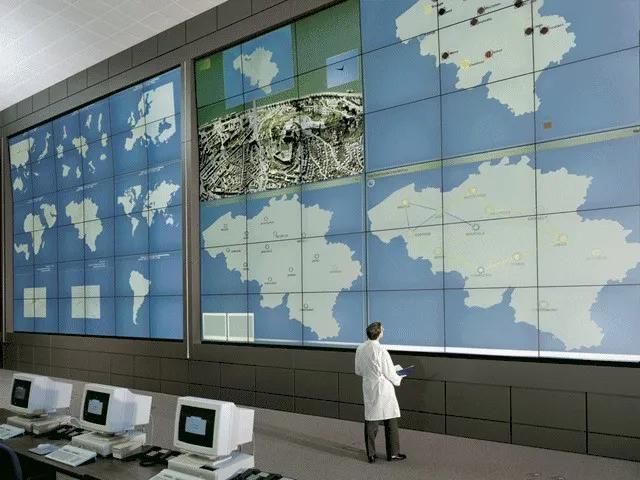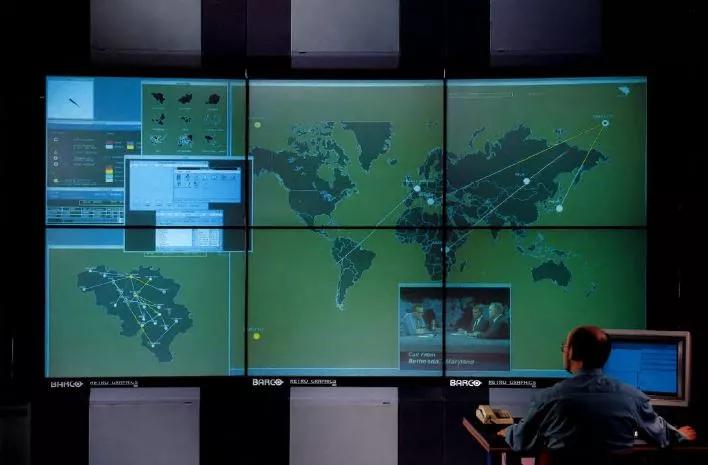History of Control Rooms - Part 2
FUTURE REVIEW 0 min read
Last month we covered the complete history of control rooms. For Barco, the story started back in 1991, with the design of a control center in Brussels for the RTT – Belgium’s national telecommunications company. Those were true pioneering days, in which we laid the basis of our current know-how of the control room market. Some colleagues involved told us more about the project.
The telecommunications business was booming in the early 90s. One of the main ambitions of the companies was to improve their quality of service, and (equally important) show their business customers how determined they were to optimize their uptime. So as much of a monitoring tool it was a marketing tool, and this was clearly visible in the first installations. They were all big, impressive video walls that were not only designed to show information but also to show off.
Designing a complete system
 In 1991, Barco was already renowned for its projectors, but we had the ambition of taking this expertise to the upcoming control rooms business. The first steps were already taken in the 80s, with the Graph-X wall. This was in fact a very early incarnation of a rear-projection cube, consisting of a projector and a screen. The mechanics consisted in multiple configurations (L-shaped in any direction, with or without mirrors, etc.) allowing the different building blocks to fit into each other like a Tetris-game. These large displays were real eye-catchers and were often used outside professional settings. Bill Gates, for example, owned one of these Graph-X walls in his house, showing art. Also King Baudouin of Belgium received such a wall.
In 1991, Barco was already renowned for its projectors, but we had the ambition of taking this expertise to the upcoming control rooms business. The first steps were already taken in the 80s, with the Graph-X wall. This was in fact a very early incarnation of a rear-projection cube, consisting of a projector and a screen. The mechanics consisted in multiple configurations (L-shaped in any direction, with or without mirrors, etc.) allowing the different building blocks to fit into each other like a Tetris-game. These large displays were real eye-catchers and were often used outside professional settings. Bill Gates, for example, owned one of these Graph-X walls in his house, showing art. Also King Baudouin of Belgium received such a wall.
The challenge for Barco, however, was to create a complete control room system, with the entire controller system included. Video wall controllers that could drive a wall consisting of so many individual projectors, and remain in sync over the entire canvas, hardly existed at the time so we needed to create that technology ourselves. A year later, there was a working prototype. It was a rack-based controller system running on Linux – which was very revolutionary as this operating system was only released in 1991.
Airborne juggernauts
Barco’s first customer was the Belgian national telecommunications company (then called RTT). Their BINOC (Belgian Integrated Network Operations Center) project started in 1991. It was a huge video wall of 3 stories high. The projectors, which were installed in retro-projection, were very big (as all projectors were at the time). They had to be towed into their position and once installed they needed to be accessible as easily as possible, because it would be too difficult to replace one of those juggernauts. The control rooms really needed to be dark environments in those days, because the light output of the projectors was limited. Fortunately, this improved a lot over time.

Learning with the customer
“Those were real pioneering days,” Geert Nuyttens, one of the designers of the new system, recalls. “We were learning a lot, but also the customers were new into this business. For example, in telecommunications, there were no known templates to display the information. Other industries, e.g. utilities, merely digitized their existing physical SCADA visuals. Telecom however had no former experience in visualizing data, so that was a search for them as well. The concept of real-time information was to be taken with a pinch of salt, as data was only renewed every ten minutes. And the situation was also new for the software application providers who never had to deal with displays having n-times the resolution of a normal display. We were also very close to the customer, working in parallel and gaining a lot of insights. Looking back now, the progress the control rooms industry has made in merely 30 years is astonishing. ”

A special thanks to Geert Nuyttens and Guy Vanwijmeersch for sharing their memories.


